Some of the best vacation destinations and activities can be hard on your jewelry. Between the chlorine in the pool and the many layers of sunscreen that you apply, travel can take a toll on certain gemstones, especially more delicate ones such as pearls, turquoise and coral. Even the most durable gemstones like diamonds require some care to be taken to ensure they remain sparkling and undamaged.
Here we review the care instructions for various gemstones and share the best ways to transport and protect them.
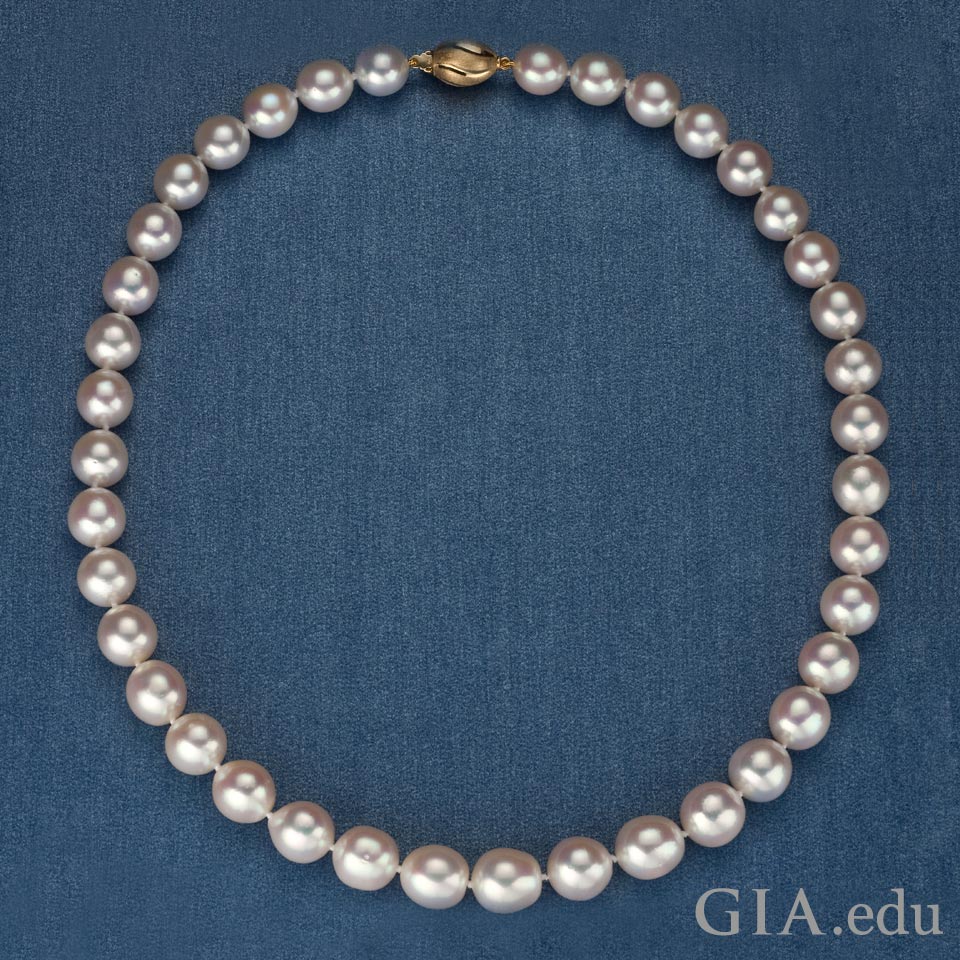
This graduated strand of Akoya cultured pearls is a classic. Courtesy of A & Z Pearls, Inc. Los Angeles, CA. Photo: Robert Weldon/GIA.
Pearls
Although pearls come from the sea, the seaside is not necessarily the best place for them. Pearls, both natural and cultured, are delicate gemstones, ranking a 2.5 to 5 on the Mohs scale, so they require extra care. Chemicals, like those in perfume and hairspray, can damage the pearl’s nacre, causing it to dull. Chlorine is especially damaging to pearls so never wear your pearl jewelry in the pool.
If you decide to wear your pearl jewelry during your vacation, be sure to save it for a special evening out. When getting dressed and ready to go out, your pearls should be the last things you put on (after your perfume and makeup) and the first thing you take off when you return.
When it comes to storing your pearl jewelry for travel, one important rule of thumb is to keep your pearls separate from your other pieces to ensure they don’t get scratched. If you have a pearl ring and a pearl necklace, be sure to keep them separated as the metal from the ring could scratch the pearls on the necklace. Do not store your pearls in a plastic bag, because plastic emits a chemical that will damage the surface of pearls. Instead, store your pearls in a soft cloth or breathable pouch.
With all of this in mind, pearls are the perfect jewelry addition to your evening outfit to imbue a sense of elegance and timelessness. So as long as you treat pearls with care, pearl jewelry can be a classic and versatile accessory for your vacation wardrobe.
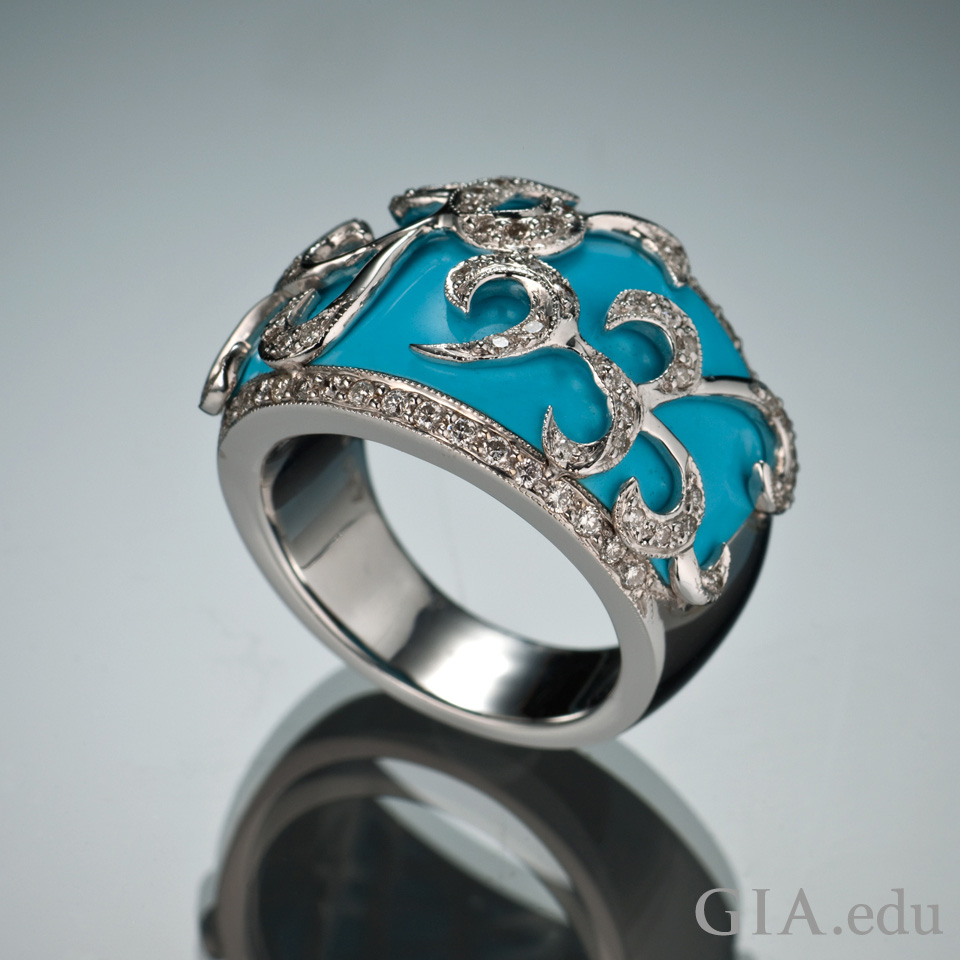
The turquoise in this white gold ring with diamonds by Andrew Sarosi is reminiscent of the colors of the sky and sea. Courtesy of Andrew Sarosi, Los Angeles, CA. Photo: Robert Weldon/GIA.
Turquoise
Turquoise can sometimes resemble the clear blue waters of your favorite beach destination or the bright blue sky. However, it is another delicate stone that should be treated with care during your travels.
Turquoise has a hardness of 5 to 6 on the Mohs scale, and is a porous gem material, which makes it more susceptible to damage and breakage if it’s not treated with care. Chemicals, perfume, cosmetics and even natural skin oils can discolor this gemstone, so remove turquoise jewelry when putting on makeup or skincare products such as sunscreen and lotion.
When packing, you should place your toiletries in a separate compartment or bag to prevent accidental leakage onto your jewelry, which could result in damaging the stone. If you need to clean your turquoise jewelry for any reason, you can do so simply with warm, soapy water.
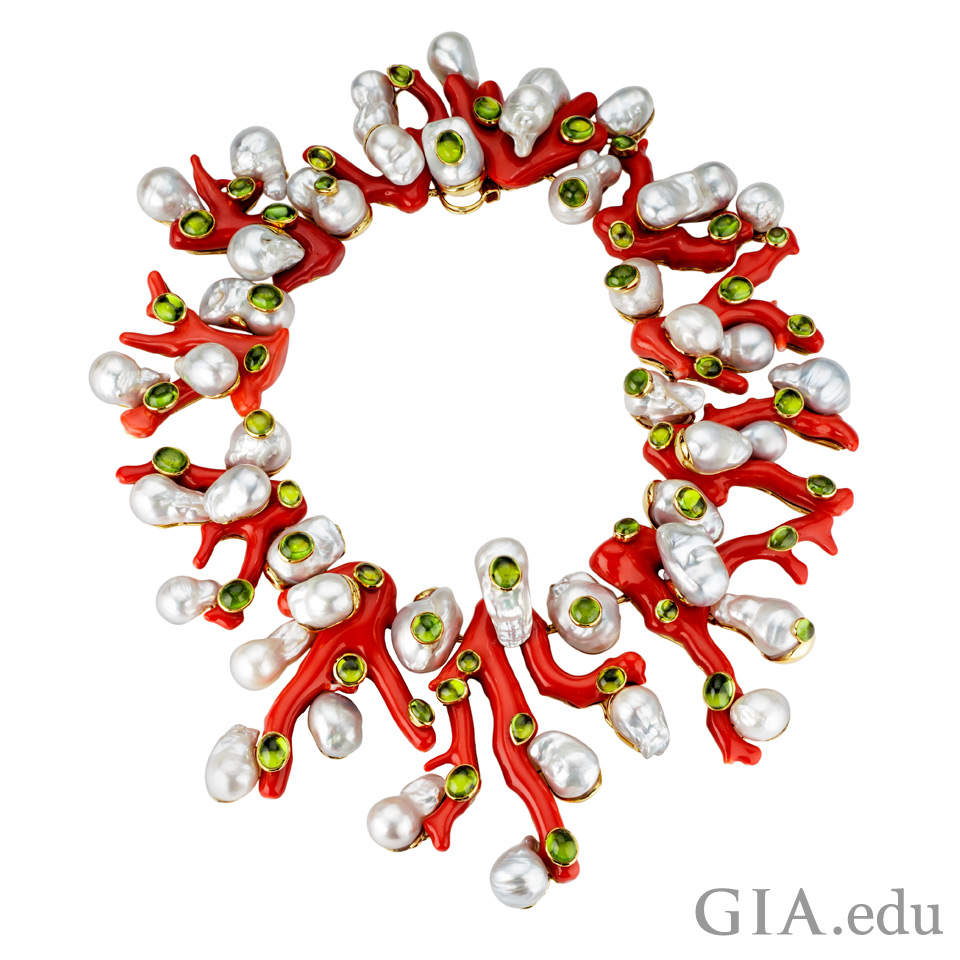
Coral jewelry is beautiful, though delicate. The Barriera Corallina necklace by Tony Duquette and Hutton Wilkinson with coral, cultured pearls, peridot and 18K gold is a striking example. Courtesy of a Private Collector. Photo: Orasa Weldon/GIA.
Coral
Your coral jewelry may be just right for a beach getaway since coral did, in fact, come from the depths of the ocean. But again, the gem material is porous and has a hardness of about 3.5 on the Mohs scale – indicating it is a softer material and more easily damaged.
Still, coral jewelry, in its varied colors like white, pink, red, orange, blue and black, can bring extra vibrancy into your vacation wardrobe. You shouldn’t wear coral in a chlorinated pool or expose it to heat or chemicals. It’s best to save it for a special night (or afternoon) spent at a restaurant, as opposed to a long, hot day at the beach. When traveling with this special gemstone, be absolutely sure to store it in its own cloth pouch so that harder gemstones won’t scratch its surface.
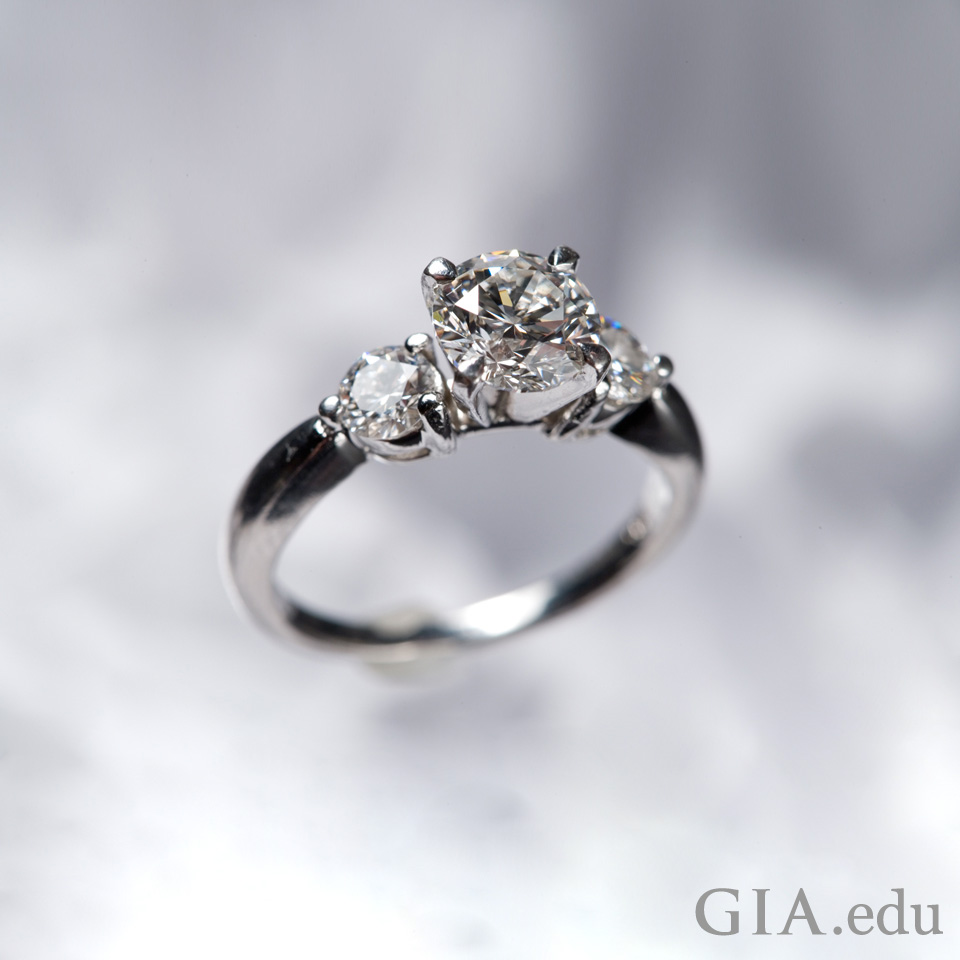
Diamonds can pick up oil and dirt from a simple touch. Courtesy of John O’Hara. Photo: Valerie Power/GIA.
Diamond
With a hardness of 10 on the Mohs scale, diamonds are the hardest and most durable gemstone, making diamond jewelry a great choice for all kinds of travel. In fact, you wouldn’t leave the house without your diamond engagement ring, would you? Still, you need to take some care to protect your diamond jewelry and keep it sparkling. Chlorine can erode some of the metal alloys used in diamond settings, possibly resulting in damaged or loosened prongs, so it’s best to take your diamond jewelry off before getting into a chlorinated pool or hot tub.
Diamonds lose their brilliance when oil and dirt collect on its surface, which will dull the appearance of the stone. If you’re applying lotions and sprays to your body during your travels, your diamond jewelry will likely require a cleaning upon your return. While diamonds that aren’t heavily included can withstand cleaning in ultrasonic devices, the best and safest way to clean diamond jewelry is with warm soapy water and a soft bristle brush.
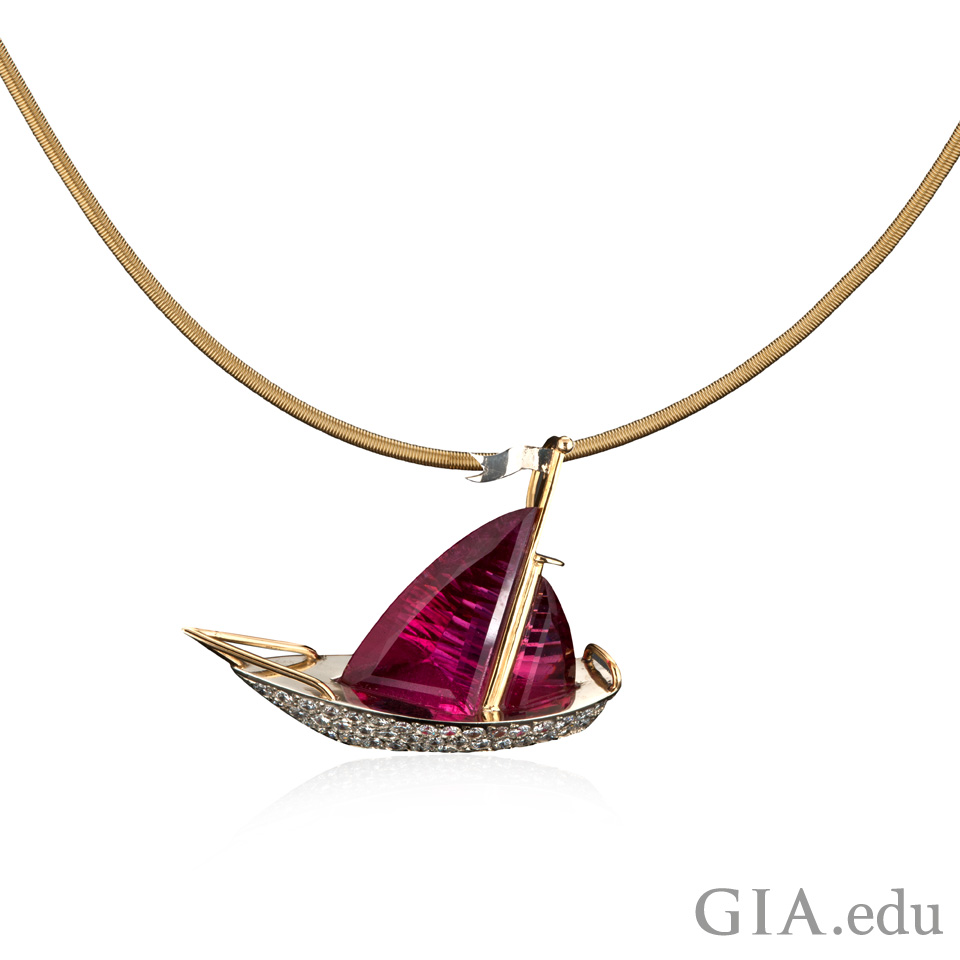
This necklace is a beautiful depiction of a favorite vacation pastime – sailing. But it’s probably too delicate for rough and tumble vacation travel, which could subject the edges of the gemstones to chipping. A piece like this is best kept safe at home and worn on those days you want to recapture the memories of the open water. Red Sails in the Sunset Sailboat slide in 18K yellow gold by Leslie Weinberg. This sailboat slide is set with two fancy cut pink tourmalines weighing a total of 7.60 carats and diamonds weighing a total of 2.10 carats. Photo courtesy © Leslie Weinberg Designs. Photo: Robert Weldon/GIA.
Best Travel Jewelry
The best jewelry to travel with is the most durable, so consider gemstones like ruby, sapphire and diamond. Before hitting the road on your next vacation, remember to check which of your gemstones, if any, have been treated, as sometimes this can affect the jewelry’s durability.
But it’s not just about the gemstones. Before you pack your jewelry, be sure to check the settings and clasps to make sure they are secure. Fragile items such as antique jewelry or jewelry featuring softer gemstones (tanzanite, peridot, citrine, opal, etc.) are best left at home or packed very carefully and worn with care during indoor activities (not including your hotel’s indoor pool).
In regards to packing your jewelry for travel, each gemstone has its own needs. A good general rule of thumb is to separate each item so the pieces don’t scratch one another. A soft cloth pouch is a good option that will protect your jewelry while still breathable. Also, it’s a good idea to pack your jewelry in your carry-on bag and keep it with you rather than placing it in your checked luggage.
For the mountain climbers as much as the beach goers , cautiously selecting and caring for your jewelry while traveling will ensure that you return home with the same beautiful, undamaged jewelry that you departed home with.
Custom Field: Array
